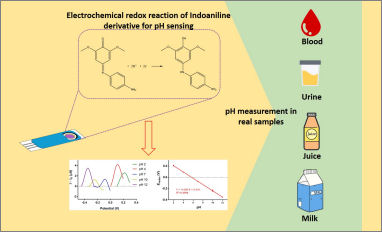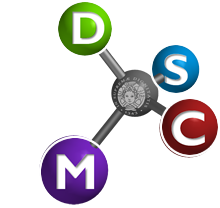 Congratulations to our Ph.D. students Federico Vivaldi, Delio Santalucia, Noemi Poma and Andrea Bonini for their scientific publication entitled “A voltammetric pH sensor for food and biological matrices” in the journal “Sensors and Actuators B: Chemical”. Measurement of pH is of fundamental importance in a wide range of environmental, biological and industrial applications.
Congratulations to our Ph.D. students Federico Vivaldi, Delio Santalucia, Noemi Poma and Andrea Bonini for their scientific publication entitled “A voltammetric pH sensor for food and biological matrices” in the journal “Sensors and Actuators B: Chemical”. Measurement of pH is of fundamental importance in a wide range of environmental, biological and industrial applications.
Glass electrode and litmus paper are widely used for this, but the former is difficult to miniaturize, prone to drift and fragile, the latter is inaccurate. This paper describes a pH sensor based on an indoaniline-derivative (4-((4-aminophenyl)imino)-2,6-dimethoxycyclohexa-2,5-dien-1-one), which exploits alternating current voltammetry to measure pH in the range between 2 and 12. The synthetized indoaniline-derivative was not genotoxic (A. cepa assay), and the sensor reliably measured pH in milk, tea, orange juice, blood, urine and saliva. Results were comparable with those obtained with a glass electrode calibrated with certified solutions (maximum relative standard deviation of 3 % and accuracy less than 0.2 pH unit). The sensor had negligible hysteresis, an almost Nernstian sensitivity (56 mV/pH) and was fully functional after a two-month storage. Sensor response showed a limited dependence on temperature (0.14 mV per pH unit and °C) and limited sensitivity to possible interferents such as lithium and sodium ions; its response to these was similar to that of a glass electrode, and was absent for ascorbic acid.
Their work is available at the following link: https://doi.org/10.1016/j.snb.2020.128650


